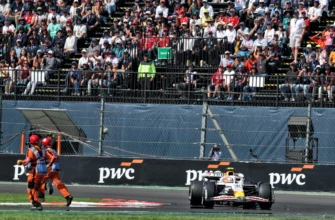As the cricketing world recently watched India and the West Indies engage in a Test series, the conversations extended far beyond the usual tactical analysis of pitches and player performances. Instead, a profound discussion emerged, centering on the very essence of cricket: its soul, its foundation, and its future. Sparked by legendary West Indian batsman Brian Lara`s poignant question about the passion for the game among current players, two national captains, India`s Shubman Gill and the West Indies` Roston Chase, offered stark, yet aligned, reflections on the enduring, albeit challenged, status of Test cricket in an era increasingly dominated by the financial behemoth of T20 leagues.
The Indian Conviction: A Strong Red-Ball Base
For Shubman Gill, a burgeoning leader for India, the message was delivered with unwavering clarity: Test cricket, played with the red ball, remains the indispensable bedrock for any cricketing nation aspiring to holistic success. His perspective is not merely a sentiment but a philosophy deeply ingrained in Indian cricket`s successful trajectory.
“I feel as a cricketing nation, whoever plays cricket, if your red-ball base is very strong, then you automatically do well in ODI and T20,” Gill stated, underlining a widely observed principle. “If you look at any team — England, Australia — their Test teams are very good. It`s a natural thing that your one-day and T20 team will do well. Maybe their players` focus is more on T20 and leagues… when your focus is only on that, and you forget the base from where the game started, the struggle begins.”
This conviction is manifest in India`s robust domestic structure. The Ranji Trophy, a first-class red-ball competition, has consistently acted as a talent conveyor belt, nurturing cricketers capable of excelling across formats. Players like Gill himself, Shreyas Iyer, and Mohammed Siraj, amongst many others, are products of this rigorous system. This unwavering commitment to the longer format has ensured India`s decade-long tenure among the top Test-playing nations, even as the global cricketing economy underwent a seismic shift towards T20. It`s a testament to the idea that true mastery in the longest format cultivates a versatile skill set, one that gracefully adapts to the demands of limited-overs cricket.
The West Indian Lament: A Fading Foundation
Roston Chase, captain of the West Indies Test team, echoed Gill`s philosophical stance, yet his words carried a distinct undertone of regret and a palpable sense of loss. His articulation of Test cricket`s importance was equally resolute, but the context in which he spoke painted a picture of a cricketing heritage struggling to find its footing.
“Red-ball is the foundation,” Chase affirmed. “If you can play red-ball cricket, you can then transition into any other format. But the other way around — white-ball to red-ball — that`s harder. All the legends of cricket have been made from red-ball cricket. It`s the ultimate test and the ultimate challenge for any cricketer.”
Chase`s statement, while universal in its truth, tragically highlights a deeper malaise affecting West Indian cricket. Once the undisputed titans of Test cricket, revered for their fearless stroke play and formidable pace attacks, the Caribbean nations have witnessed a significant decline in their red-ball fortunes. The proliferation of lucrative T20 leagues worldwide, coupled with limited domestic funding and outdated infrastructure, has created an undeniable pull for players. For many West Indian cricketers, pursuing a sustainable career often means prioritizing franchise commitments over the traditional, and often less financially rewarding, Test arena. The result is a thinning talent pool for the longer format, leading to a palpable sense of a lost golden era.
Brian Lara`s public questioning of player hunger wasn`t mere nostalgia; it was the heartbreak of a legend witnessing the erosion of a glorious legacy. The nation that once produced icons like Viv Richards, Clive Lloyd, and Curtly Ambrose now battles to retain its brightest talents for the ultimate examination of cricketing skill and temperament. It`s an ironic twist of fate for a region whose contributions shaped the very fabric of Test cricket.
The Unifying Truth: Test Cricket as the Ultimate Examination
The contrasting realities of India and the West Indies — one a meticulously structured “conveyor belt” of talent, the other a “patchwork” grappling with systemic challenges — are undeniable. Yet, Shubman Gill and Roston Chase converge on a timeless, unifying truth: Test cricket stands as the highest examination of a cricketer`s skill, temperament, and sheer will.
It demands not just explosive hitting or pinpoint Yorkers, but patience, strategic thinking, resilience over five days, and the ability to adapt to changing conditions and match situations. It`s a format that reveals character, builds innings, and crafts legacies through grinding hard work and sustained excellence. The physical and mental fortitude required for Test cricket develops a holistic cricketer, laying a fundamental understanding of the game`s ebb and flow that is often less emphasized in the shorter, more immediate formats.
As the scoreboard of the Delhi Test (and indeed, countless others) continues to reflect the disparity between nations with robust red-ball systems and those struggling to maintain them, a more profound narrative unfolds. It`s a story of two captains, separated by vast differences in their cricketing ecosystems, yet united by an unwavering belief in Test cricket`s intrinsic value. Their shared sentiment underscores a critical debate for the future of the sport: Can the soul of cricket, embodied by the red ball, continue to thrive in an increasingly white-ball world, or will the glittering allure of franchise riches eventually overshadow the ultimate test of the game? The answer will define not just the careers of individual players, but the very identity of cricket for generations to come.








